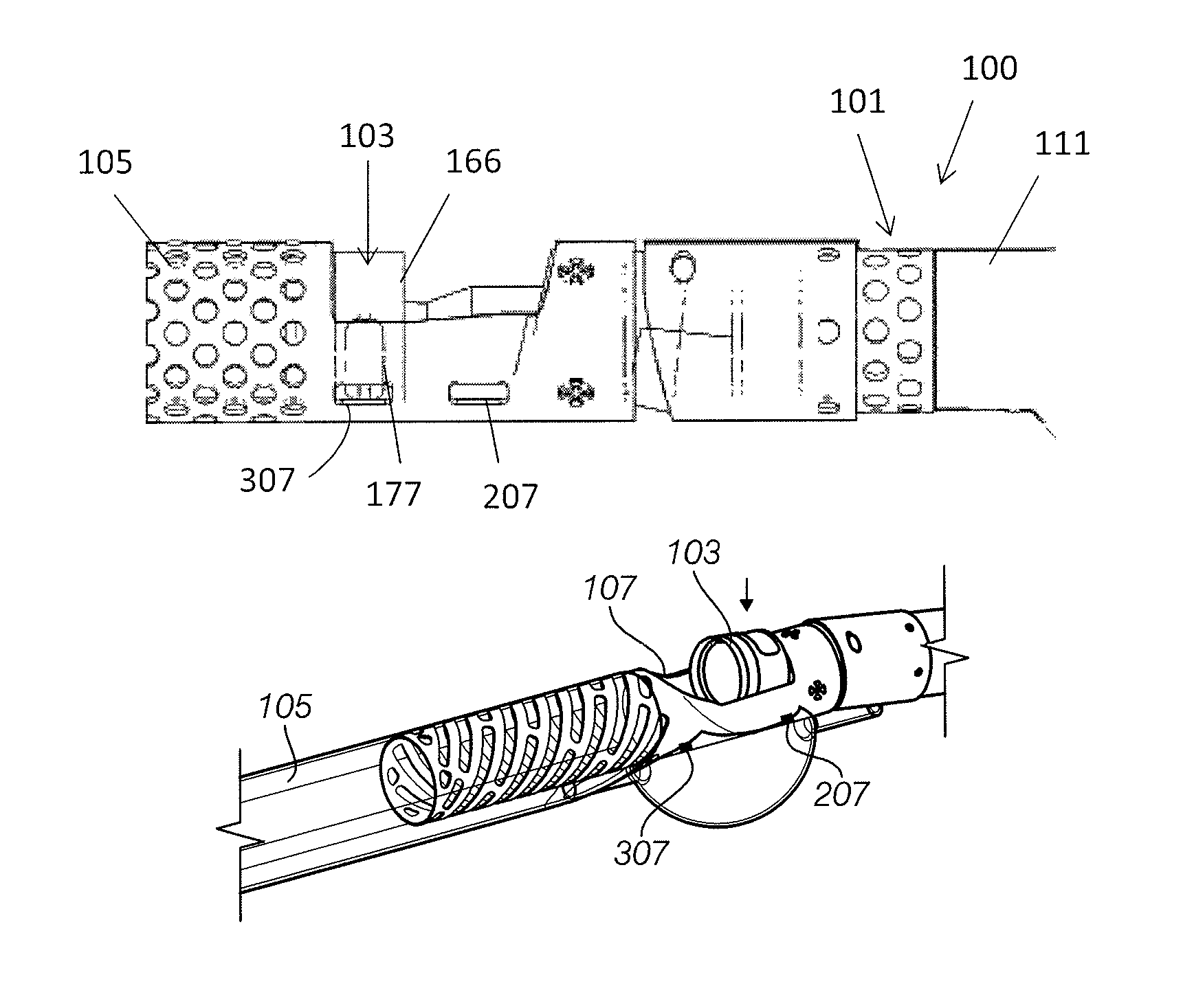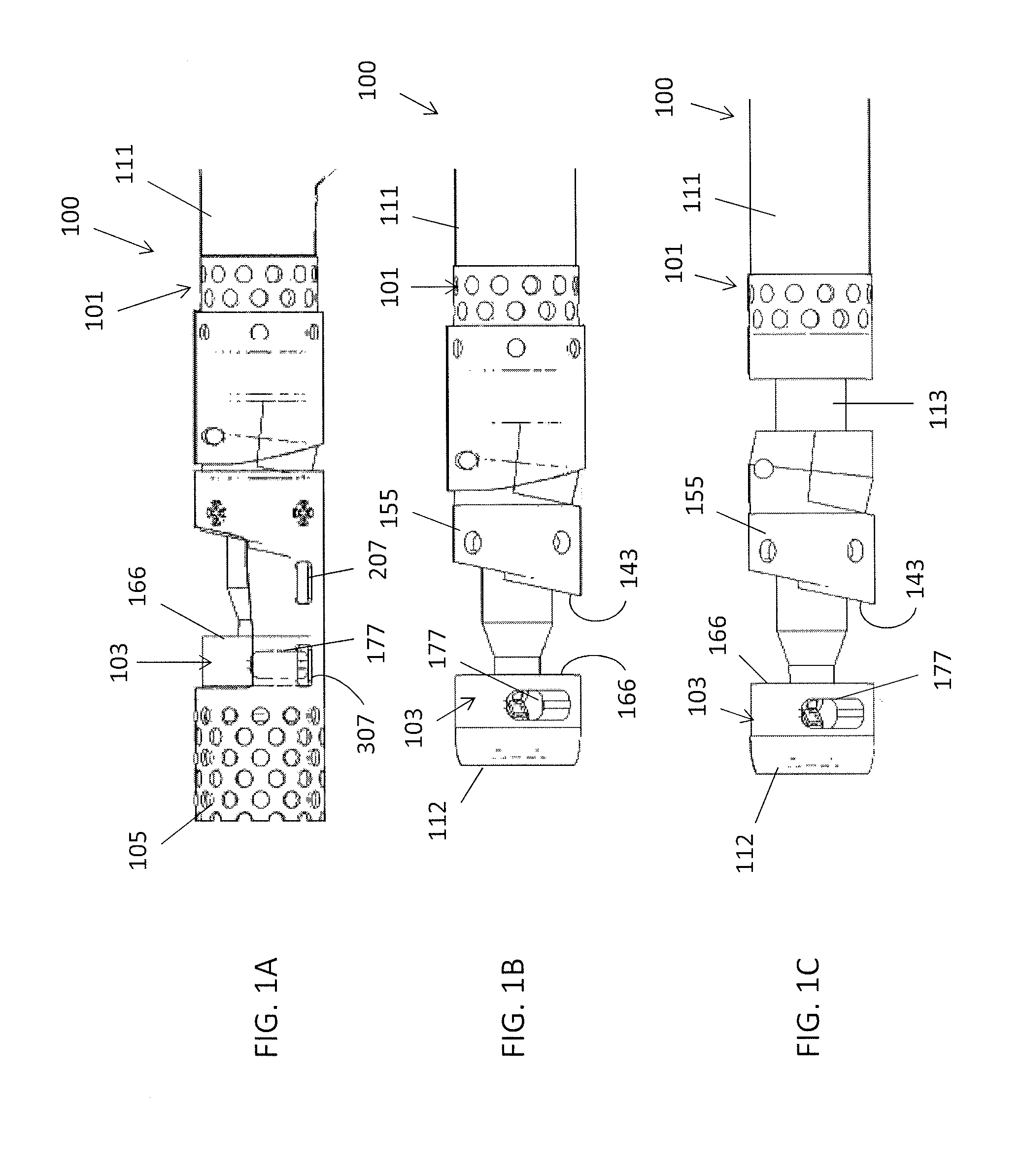Atherectomy catheters and occlusion crossing devices
a technology of atherectomy and crossing device, which is applied in the field of atherectomy catheters, can solve the problems of occlusion of arteries, inaccurate images obtained from atherectomy devices, and catastrophic consequences, and achieve the effect of clear imaging region and safe bend
- Summary
- Abstract
- Description
- Claims
- Application Information
AI Technical Summary
Benefits of technology
Problems solved by technology
Method used
Image
Examples
Embodiment Construction
[0099]Described herein are atherectomy catheters and occlusion-crossing catheters.
Atherectomy Catheters
[0100]The atherectomy catheters described herein can include a catheter shaft with a drive chassis on the end. The drive chassis includes a stout torque coil (“imaging torqueing coil” / drive shaft) for rotating an imaging element, a cutter, and an imaging optical fiber in the center of the torque coil. Both the imaging elements and the cutter can be part of a head that rotates with the driveshaft. The head can rotate in a single direction (e.g., clockwise). The head can further slide distally / proximally by pushing or pulling the torque coil / drive shaft. As a result of the movement of the driveshaft, a nosecone configured to hold tissue can be displaced. In some embodiments, the nosecone can open and close using an off-axis hinge. In other embodiments, a cam member and cam slot can be used to open and close the nosecone.
[0101]FIGS. 1A-3 show an example of an atherectomy catheter 100 ...
PUM
 Login to View More
Login to View More Abstract
Description
Claims
Application Information
 Login to View More
Login to View More - R&D
- Intellectual Property
- Life Sciences
- Materials
- Tech Scout
- Unparalleled Data Quality
- Higher Quality Content
- 60% Fewer Hallucinations
Browse by: Latest US Patents, China's latest patents, Technical Efficacy Thesaurus, Application Domain, Technology Topic, Popular Technical Reports.
© 2025 PatSnap. All rights reserved.Legal|Privacy policy|Modern Slavery Act Transparency Statement|Sitemap|About US| Contact US: help@patsnap.com



